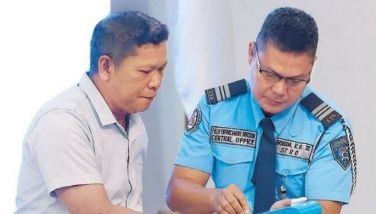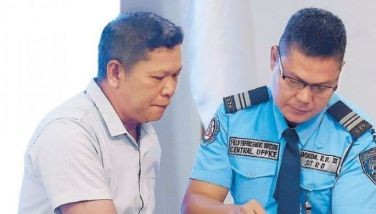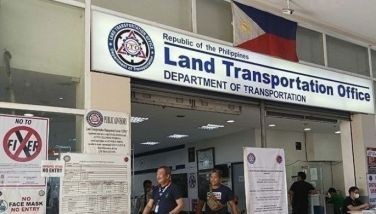Maharlika and ill-gotten wealth

Much of the public’s concerns against the much touted Maharlika Investment Fund (MIF), the country’s first ever sovereign wealth fund, has to do with billions in ill-gotten wealth supposedly stashed in secret bank accounts abroad.
Opposition lawmakers raised the alarm bells early on. Maharlika may be used to bring back the ill-gotten wealth amassed during the administration of Ferdinand Marcos Sr., they say.
Ill-gotten wealth
Ah yes, ill-gotten wealth. In case people have forgotten, on July 15, 2003, the Supreme Court ruled that roughly P36 billion worth of assets of the Marcoses and their associates were considered ill-gotten wealth. This is according to the Human Rights Violations Victims’ Memorial Commission.
However, it is also important to note that the Supreme Court has affirmed the Sandiganbayan’s dismissal of the complaint filed by the Republic of the Philippines for the recovery of supposed P41 billion in ill-gotten wealth of the Marcoses. It is one of many ill-gotten wealth cases.
In any case, assuming there’s still unrecovered ill-gotten wealth in some hidden vaults abroad, would Maharlika be used to launder this back to the country?
I asked Maharlika Investment Corp. (MIC) president and CEO Joel Consing, a topnotch investment banker and multi-awarded CFO, about this.
Consing, who has the Herculean task of making this wealth fund succeed, said there are measures in place to make sure this does not happen.
“Regarding the Fund being used to get back ‘ill-gotten wealth,’ the banks through which funds will be transmitted for investment into Maharlika would have gone through a KYC (know your customer) process, especially for materially significant amounts, on both sides of the remittance process,” he said.
MIC itself will conduct further due diligence, he added.
“That said, while banks conducting KYC on inward and outward remittances provide a layer of protection against money laundering, the MIC itself will implement further due diligence measures to verify the legitimacy of investment funds, particularly for substantial amounts. This additional layer of scrutiny would strengthen the presumption of regularity and build public trust in the Fund’s operations,” Consing explained.
It’s reassuring to hear this. Of course the real test would be to see it actually happen.
The public’s deep mistrust is understandable, given the hard lessons from Marcos Sr.’s era.
After hearing Consing talk about his plans, however, I am significantly more at ease now about the Maharlika Fund and I fervently hope it succeeds.
As Consing’s track record would show – he has been involved in many successful start-ups and has worked with tycoon Enrique Razon’s sprawling global ports empire ICTSI as CFO – he is a no-nonsense professional executive.
He specializes in mergers and acquisitions, treasury management, balance sheet management, global capital markets and strategic planning.
Upon hearing about the planned Maharlika Investment Fund, Consing already knew that he wanted the job because of the huge role the wealth fund could play in nation building and equally interesting for him was the challenge.
He strikes me as a man who loves challenges – the more difficult the task is, the more rewarding for him.
More importantly, he said that his loyalty is to the country and to the Filipino people – no vested interest or hidden agenda.
His plans for Maharlika are quite impressive and challenging for sure because it’s never been done before, but Joel said if the Marcos administration wanted someone who would simply do what’s already been done before, then he is not the man for it – an indication perhaps of how his mind works, the kind that likes to solve complex problems before they even appear.
National development fund
In summary, he said MIF would start as a national development fund that would invest in critical areas in the country and address different pain points, including creating much needed jobs for Filipinos. This would be done by initially investing in four areas in the country: tourism infrastructure, energy security, digital infrastructure and agro-forestry industrial urbanism.
I particularly like the plan to help address the digital divide through digital infrastructure. He envisions that the state corporation will play a role in building telecom towers in rural areas that still do not have internet access or mobile phone signals. I can’t wait for this to happen so that Filipinos in rural areas will finally have access to the internet.
Once the Maharlika Fund generates excess funds from several low-hanging fruits, it can invest in the fixed income and capital markets, Consing said.
It all sounds exciting and reassuring to hear Joel Consing discuss the Maharlika’s blueprint, which is of course still subject to the approval of MIC’s board of directors.
But as with every good plan in this nation of 114 million, the real test will be in the execution. MIC will be facing our impossibly slow bureaucracy as it needs to deal with other government agencies. It also needs to work with local executives, some of whom are notoriously corrupt.
As I said, I hope Joel succeeds in making the Philippines’ first ever sovereign wealth fund work for Filipinos.
Now if and when that happens, the next thing to watch out for is what happens when the next guy comes along after Joel’s term ends in three years.
Will the safeguards Joel put in place be retained? As former central bank chief Felipe Medalla once said, “will the guys five years from now still be OK?”
For the sake of this nation of 114 million, I fervently hope so.
* * *
Email: [email protected]. Follow her on Twitter @eyesgonzales. Column archives at EyesWideOpen (Iris Gonzales) on Facebook.
- Latest
- Trending


























